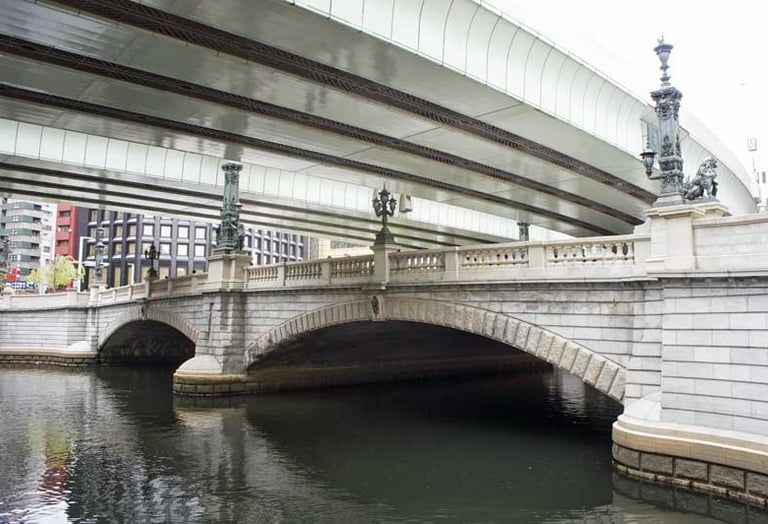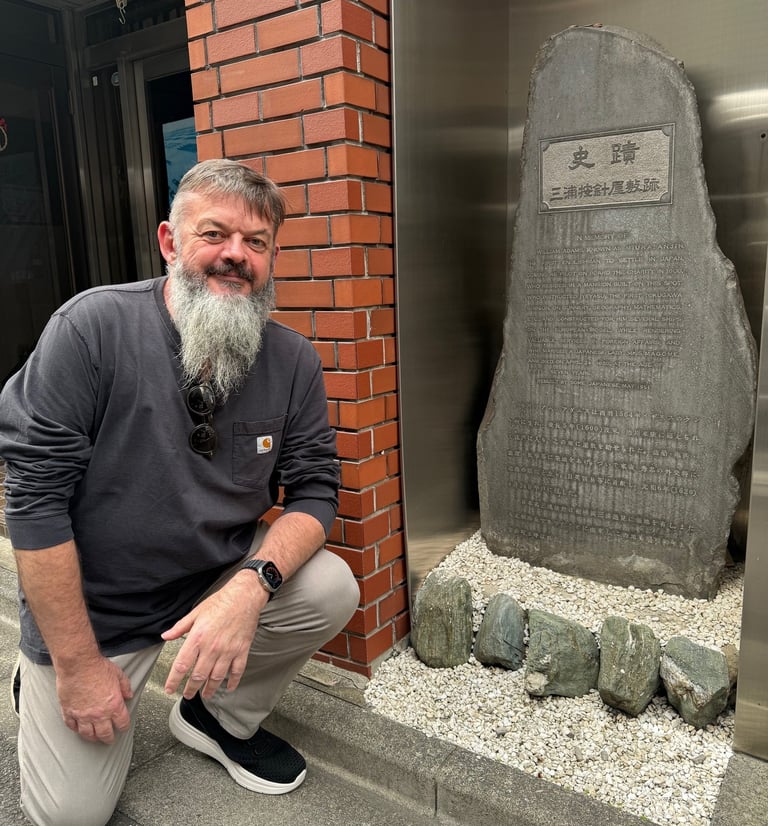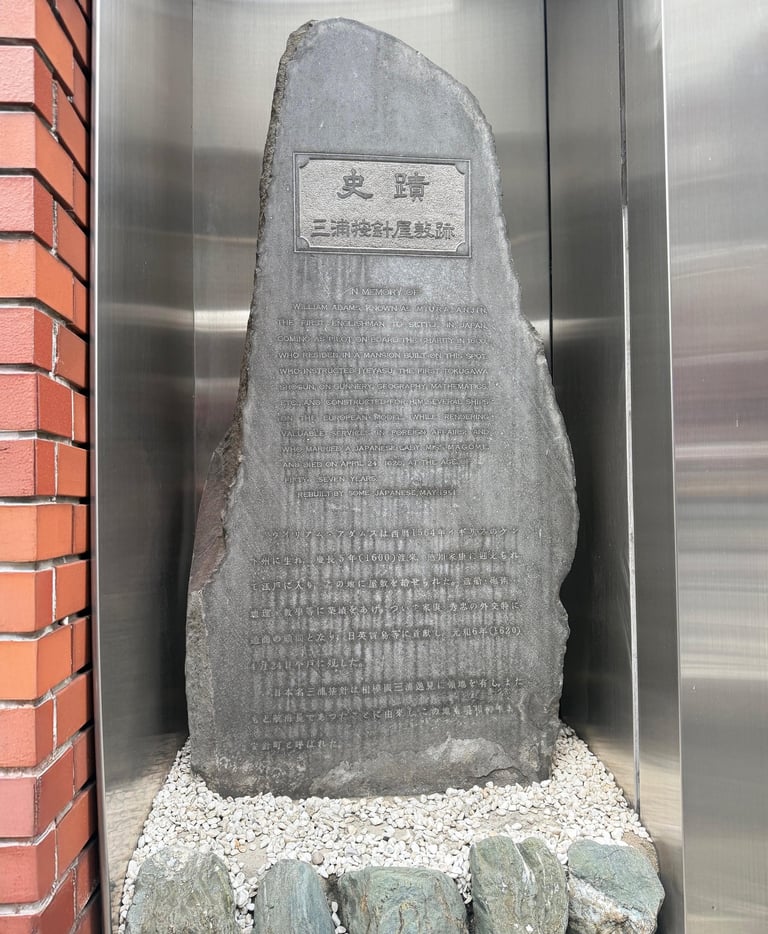TRACING WILLIAM ADAMS' FOOTSTEPS
Nihonbashi, Tokyo
A discrete stone memorial to William Adams with a brief English description of his life is located between modern buildings in Anjin-dori at Nihonbashi, central Tokyo. Adams established a presence around here for trading and the memorial text ends with: "Rebuilt by some Japanese, May 1951."
The Nihonbashi district was the commercial centre of Edo, the original name given to Tokyo, and also Japan during the ascendency of the samurai. Nihonbashi, which means "Bridge of Japan," is derived from the river crossing where the nation’s major thoroughfares converged. These included the famed Tokaido and Nakasendo along which a constant stream of travellers flowed bringing tribute to the shogun and goods and shackles.
A short distance from the shogun’s outer walls of, at 16 kilometres around, the expansive and ornate castle, the district became home to Edo’s fish market, merchants and retailers. The latter includes Mitsukoshi, the grand department store chain that was established here in 1673.
Although major business districts have developed elsewhere in the capital, Nihonbashi is an upmarket thriving area of businesses, shops, restaurants and hotels. It still retains an air of an older age and is well worth exploring along with the surrounding area, which includes Tokyo Station and the Marunouchi district.
The quarter on the east side is known as Yaesu, which is a corruption of Joostens, Adams’ shipmate who also became a samurai and lived in the vicinity. The west side of Tokyo Station is a grand structure that was completed in 1914 as a gateway to Marunouchi, where many top Japanese corporations are headquartered. This district was developed within the derelict grounds of the shogun’s castle in a rivalry against nearby Nihonbashi that lasts to this day.
Google Map: https://maps.app.goo.gl/p68RWJiSQh6h4tBV9
Memorial text: https://hikingtokyo.com/2004/12/31/william-adams-miura-anjin-memorial-nihonbashi/
Nihonbashi's landmark 17th century canal bridge in central Tokyo






